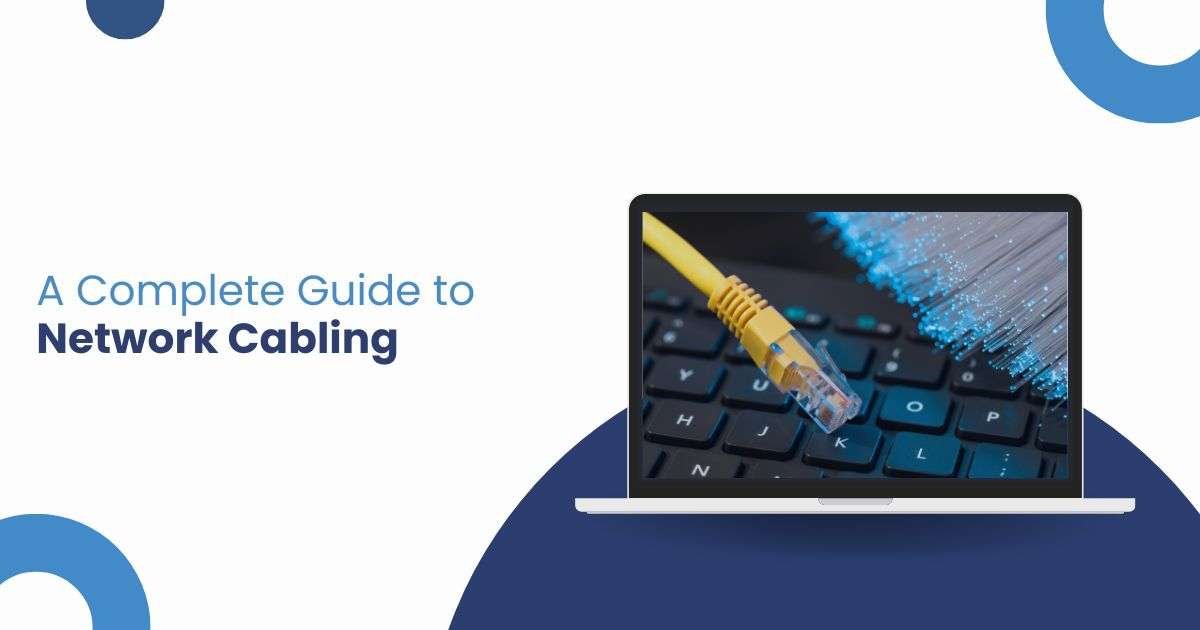In today’s digital age, where connectivity is paramount, network cabling services as the backbone of modern communication infrastructures. Whether in homes, offices, or data centers, reliable cables for networks is essential for seamless connectivity and data transmission. In this comprehensive guide, we delve into the world of cables for networks, exploring its types, installation best practices, maintenance tips, and future trends.
Types of Network Cables: Overview and Comparison
Network cables come in various types, each suited for specific applications and environments. From traditional twisted-pair cables to advanced fiber optics, understanding the differences is crucial for designing efficient networks. Let’s explore the common types of network cables and their comparative advantages.
Structured Cabling vs. Point-to-Point Cabling
When planning network infrastructure, two primary approaches are structured cabling and point-to-point cabling. Each method has its pros and cons, impacting factors like scalability, maintenance, and cost-effectiveness. Let’s dissect these approaches to help you make informed decisions for your network.

Choosing the Right Network Cable for Your Infrastructure
Selecting the appropriate network cable is paramount to ensure optimal performance and reliability. Factors such as bandwidth requirements, distance, and environmental conditions influence the choice between copper and fiber optic cables. Let’s navigate through the decision-making process to help you choose the right cable for your infrastructure needs.
Installation Best Practices for Network Cabling
Proper installation is critical for maximizing the performance and longevity of network cabling. From cable routing to termination techniques, adhering to industry best practices is essential. We’ll discuss key installation tips to ensure your cables for networks is installed efficiently and securely.
Cable Management Techniques in IT Infrastructure
Effective cable management not only enhances aesthetics but also improves airflow and facilitates troubleshooting. Implementing organized cable management techniques is crucial, especially in complex IT infrastructures. Let’s explore various cable management strategies to keep your network tidy and functional.
Understanding Cable Standards and Specifications
Compliance with industry standards ensures interoperability and reliability in network installations. Familiarizing yourself with cable standards and specifications helps you make informed decisions and ensures compatibility with networking equipment. Let’s decipher the intricacies of cable standards to streamline your network projects.
Testing and Certification of Network Cabling
Testing and certifying Network Cabling Solutions are vital steps to validate performance and adherence to standards. Through rigorous testing procedures, you can identify and rectify issues before they impact network performance. We’ll discuss the importance of testing and certification in maintaining a robust network infrastructure.
Cable Maintenance and Troubleshooting Tips
Regular maintenance and prompt troubleshooting are essential for sustaining network reliability and minimizing downtime. Knowing how to identify and address common cable issues empowers you to maintain peak performance. Let’s explore practical maintenance and troubleshooting tips to keep your network running smoothly.
Upgrading Network Cabling for Scalability and Performance
As technology evolves and network demands increase, upgrading Network Cabling Solutions becomes inevitable. Whether expanding infrastructure or transitioning to higher-speed networks, upgrading requires careful planning and execution. We’ll discuss strategies for upgrading network cabling to accommodate scalability and enhance performance.
Environmental Considerations in Network Cabling
Environmental factors such as temperature, humidity, and physical hazards can impact the performance and lifespan of wiring for a network. Implementing measures to mitigate environmental risks is crucial for maintaining network reliability. Let’s examine environmental considerations and mitigation strategies for robust network installations.
Security Measures for Protecting Network Cabling
Securing wiring for a network services is as critical as safeguarding digital assets against cyber threats. Physical security measures help prevent unauthorized access and tampering with network infrastructure. We’ll explore security measures and protocols to protect wiring for a network from potential breaches and intrusions.
Future Trends in Network Cabling Technology
The landscape of network cabling services is constantly evolving, driven by technological advancements and industry trends. From innovations in cable materials to emerging connectivity standards, staying abreast of future trends is essential for planning future-proof network infrastructures. Let’s discuss the latest trends shaping the future of network cabling technology.
Cost Analysis and Budgeting for Network Cabling Projects
Budget considerations play a significant role in wiring for a network projects, impacting equipment selection, installation methods, and overall project scope. Conducting a thorough cost analysis and budgeting ensures projects are completed within financial constraints while meeting performance requirements. We’ll delve into cost analysis and budgeting strategies to help you optimize project expenditure.
Compliance and Regulatory Requirements in Network Cabling
Adherence to compliance and regulatory requirements is non-negotiable in wiring for a network projects, especially in regulated industries. Understanding applicable standards and regulations ensures legal compliance and mitigates potential liabilities. We’ll explore key compliance considerations and regulatory frameworks relevant to wiring for a network installations.
Final Thoughts:
Network cabling services form the foundation of modern connectivity, facilitating seamless communication and data exchange. By understanding the intricacies of network cabling, from cable types to installation best practices, you can build robust and reliable network infrastructures. Whether planning new installations or upgrading existing networks, this comprehensive guide equips you with the knowledge to make informed decisions and navigate the complexities of cables for networks effectively.














